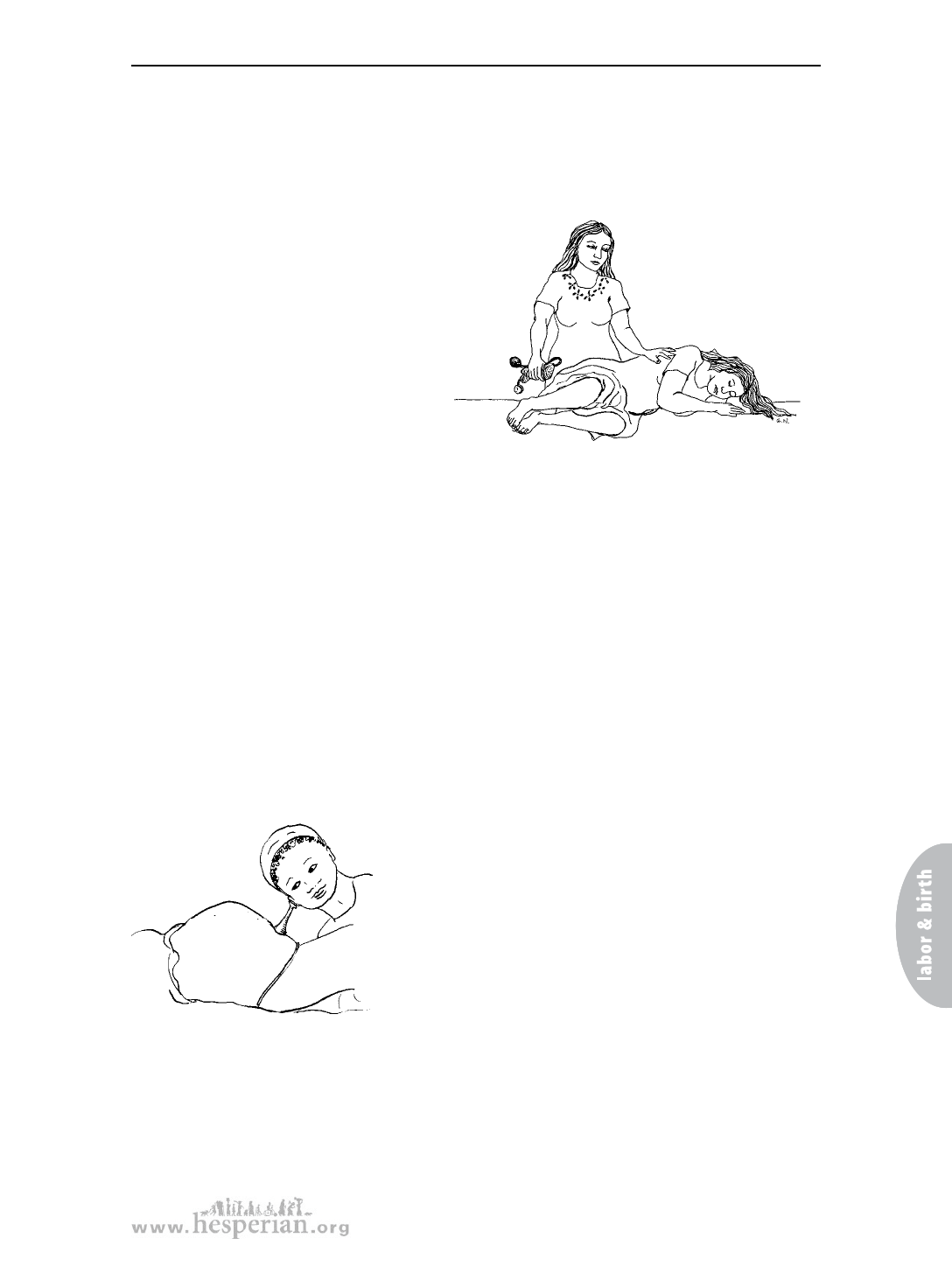
Help the mother have a safe birth
Help the mother have a safe birth
Check the mother’s and baby’s physical signs
The mother’s physical signs
Check the mother’s blood pressure and pulse
every 30 minutes or so during stage 2 for signs
of pre-eclampsia, infection, or bleeding.
Write down the numbers each time.
If the mother’s blood pressure is 140/90
or higher she may have pre-eclampsia
(see page 180). If it suddenly drops
more than 15 points in the bottom
number, she may be losing blood
(see page 183). If her pulse is faster than 100 beats a minute between contractions,
she may be dehydrated (see page 159), have an infection (see page 179), or be
losing blood (see page 183).
The baby’s physical signs
The baby’s heartbeat is harder to hear in stage 2 because it is usually lower in the
mother’s belly.
An experienced midwife with good equipment may be able to hear the baby’s
heart between contractions. You can hear it best very low in the mother’s belly,
near the pubic bone. It is OK for the heartbeat to be as slow as 70 beats a minute
during a pushing contraction. But it should come right back up as soon as the
contraction is over.
If the baby’s heartbeat does not come back up within 1 minute, or stays slower
than 100 beats a minute for more than a few minutes, the baby may be in trouble.
Ask the mother to change position (see the
next page), and check the baby’s heartbeat
again. If it is still slow, ask the mother to stop
pushing for a few contractions. Make sure she
takes deep, long breaths so that the baby will
get air. See page 172 to find out some reasons
why the heartbeat may be slow.
If the baby’s heartbeat is fast, see page 173.
199
A Book for Midwives (2010)